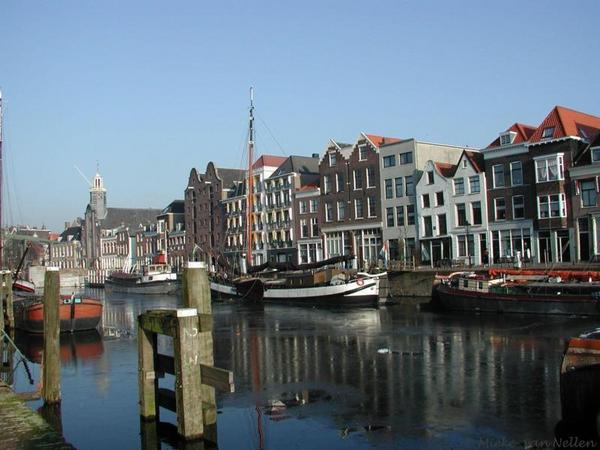 WOODEN SHOES
WOODEN SHOESSturdy wooden shoes, also known as clogs, are also typically Dutch. They used to be worn by people working in the fields. Clogs are very hard, so they really protect your feet. They are also almost impossible to wear out, which means they last for a very long time. Nowadays very few people wear clogs, but some farmers still do.
 WINDMILLS
WINDMILLSIt’s often windy in the Netherlands. The Dutch started using the wind hundreds of years ago by building windmills. At one time there were almost 10,000 windmills in the Netherlands, but there are now only about 1,000 left.
Windmills have their own language. The position of the sails has a special meaning for people living nearby. When a baby is born or when there is a wedding, the miller attaches little flags and other decorations to the sails of his windmill.

Windmills are still in use today. These modern windmills are used to generate electricity in an environmentally friendly manner.
SPECIAL DAYS
 SINTERKLAAS (ST NICHOLAS’ EVE)
SINTERKLAAS (ST NICHOLAS’ EVE)
St Nicholas’ Eve is celebrated every year on 5 December. Though very popular with young and old alike, the celebrations are mainly for children. On St Nicholas’ Eve, Dutch people give each other presents.
St Nicholas’ Eve is named after St Nicholas, the patron saint of children and sailors, who lived from 280 AD to 342 AD. Little children in the Netherlands still believe that St Nicholas really exists.
 KONINGINNEDAG (QUEEN’S DAY)
KONINGINNEDAG (QUEEN’S DAY)
Queen Beatrix’s birthday is on 31 January, but she celebrates it on 30 April, which was the birthday of her mother, Queen Juliana.
On Queen’s Day, the whole country joins in the celebrations. Some people dress up in orange clothes, as orange is the colour of the Netherlands. Bicycles, houses and prams are decorated. People

who have Dutch flags hang them outside their houses. The flags are decorated with an orange pennant. This is the symbol of the royal family.
On Queen’s Day, hundreds of thousands of people go to cities like Amsterdam and Utrecht. There are large flea markets where people are allowed to sell whatever they like, including household goods, food, books and t-shirts.
 EASTER
EASTEROn Good Friday, the Friday before Easter, Christians remember the crucifixion of Jesus Christ. On Easter Sunday, they celebrate his resurrection from the dead. In the Netherlands, people also have a day off work on Easter Monday, and the schools are closed on that day too. Dutch people eat lots of eggs at Easter. The eggs are painted and decorated. Chocolate eggs are also sold in shops. On Easter Sunday, many parents hide chocolate eggs in the house and/or garden. The children then have to hunt for them.
CHRISTMAS Christmas is a major Christian feast, when people celebrate the birth of Jesus Christ. In the Christian world, Christmas is celebrated on 25 December. In the Netherlands, it is celebrated on both 25 and 26 December. At Christmas time, many Dutch people have a Christmas tree – a pine tree decorated with brightly coloured tinsel, baubles, angels and fairy lights. People spend time with their families, and often give each other presents.
NEW YEAR’S EVEPeople often get together with their friends and family to celebrate New Year’s Eve. They eat apple turnovers and oliebollen (a type of Dutch doughnut with raisins or apple inside). Most children are allowed to stay up until midnight to hear the clock strike twelve. Afterwards people set off fireworks. There are loud explosions all over the place, so everyone can see and hear that the new year has begun!























